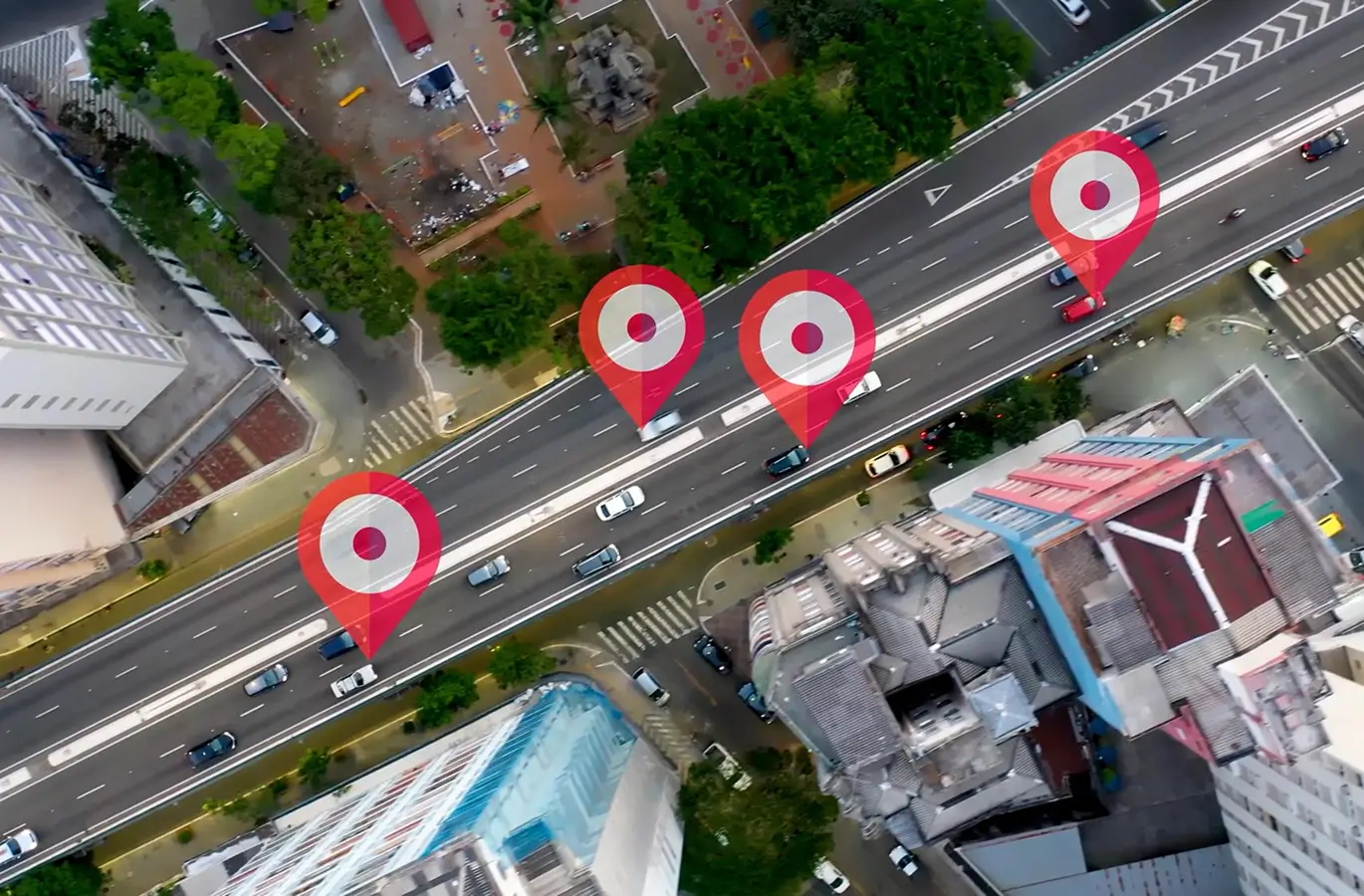Choosing the right fleet management tracking system is essential for businesses of all sizes to reduce costs, improve efficiency, and ensure compliance. These systems use GPS and telematics to monitor real-time location, driver behavior, fuel consumption, and maintenance needs, offering capabilities from basic GPS to advanced video and IoT-connected tracking. Businesses should select a system based on their fleet size, prioritize core features like real-time tracking, geofencing, maintenance alerts, and strong integration capabilities, and evaluate vendors for data security and mobile access to ensure long-term ROI, including potential fuel savings of 15–25%.
Choosing the right tracking system is no longer optional! Imagine you’re managing a growing fleet—vehicles moving across cities, carrying valuable cargo, responding to client calls, or servicing equipment. You get a call from dispatch: a driver missed their delivery window. The client’s upset. You have no real-time data to explain what happened or to reroute efficiently. You’re managing blind.
That’s the challenge many businesses face every day.
A reliable fleet management tracking system isn’t just about dots on a map. It’s about knowing the right vehicle is in the right place and doing the right job at the right time. It’s about transforming uncertainty into control and data into strategy. And it’s no longer just for large logistics firms. From HVAC services to rental equipment companies, more businesses now rely on tracking tools to reduce waste, improve safety, and stay competitive.
However, not all systems are made equal. Choosing one that fits your business—rather than one that looks flashy—can mean the difference between daily friction and operational clarity.
In this article, we’ll break down everything you need to know about finding a tracking system that truly works for your fleet—whether you run five vans or five hundred trucks.
Whether you’re managing 10 vehicles or 1,000, the right fleet tracking system can help you reduce costs, improve dispatch efficiency, boost driver safety, and unlock powerful analytics that fuel better decisions. But with so many solutions on the market, how do you choose the right one?
This guide will walk you through the essentials of fleet tracking systems, what features truly matter, how to evaluate providers, and how to decide based not on hype—but on what will move the needle for your business.
What Is a Fleet Management Tracking System?
A fleet management tracking system is a technology platform that enables businesses to monitor, manage, and optimize their vehicle operations in real time. It utilizes GPS and telematics technologies to track location, speed, driver behavior, fuel consumption, maintenance needs, and more.
At its core, a fleet tracking system bridges the gap between your operations team and the moving pieces on the ground. It enables:
- Real-time location tracking
- Route optimization and geofencing
- Vehicle health monitoring
- Driver behavior analysis
- Regulatory compliance (like ELD mandates)
- Analytics and Reporting
For many businesses, this data isn’t just useful—it’s transformative. It enables faster response times, safer operations, more preventative maintenance, and, ultimately, lower costs.
Why Fleet Tracking Matters More Than Ever
The transportation and field service landscape has become increasingly complex. Rising fuel prices, supply chain volatility, and increased demand for delivery transparency are pushing fleets to perform at their peak.
Here’s what’s driving adoption:
- Fuel efficiency: With fuel making up 30–40% of operating costs, tracking systems help eliminate unnecessary idling, detect aggressive driving, and plan fuel-efficient routes.
- Customer expectations: Clients now expect real-time delivery updates and accurate estimated times of arrival (ETAs).
- Compliance: Governments are tightening regulations on Hours of Service (HOS), vehicle safety, and emissions.
- Asset protection: Vehicle theft and unauthorized usage can be mitigated through live tracking and alerts.
A robust fleet management tracking system turns these challenges into opportunities for optimization.
Types of Fleet Tracking Technologies
Choosing the right system starts with understanding the different technology options available. Each offers different levels of insight and control.
- Basic GPS Tracking
- Provides real-time or near-real-time location data
- Great for small fleets with simple tracking needs
- Telematics Systems
- Combines GPS with onboard diagnostics (OBD)
- Tracks vehicle health, fuel use, driver behavior
- Ideal for performance monitoring and maintenance management
- ELD-Integrated Systems
- For fleets subject to Electronic Logging Device regulations
- Captures HOS logs automatically
- Crucial for long-haul and compliance-heavy fleets
- Video Telematics
- Includes dashcams for safety, training, and incident review
- Enables coaching and litigation protection
- IoT-Connected Tracking
- Includes sensor-based data for temperature, load monitoring, tire pressure, and more
- Ideal for cold chain logistics, hazmat, or specialized cargo
The right system for your business depends on your fleet size, industry, compliance obligations, and specific pain points.
Core Features to Look For
Not all tracking systems are created equal. Look beyond flashy dashboards and evaluate the substance:
- Real-Time GPS: This should update frequently with minimal lag.
- Geofencing & Alerts: Set boundaries and receive alerts for unauthorized movements or zone breaches.
- Driver Behavior Monitoring: Speeding, hard braking, rapid acceleration, seatbelt usage—all can be tracked and coached.
- Maintenance Scheduling: Automated alerts based on mileage, engine hours, or sensor triggers.
- Fuel Tracking: Measure consumption, spot theft, or inefficiencies.
- Mobile App Access: Ensure your team can access key info on the go.
- Integration Capabilities: Does the solution support API-based integration with our existing systems—such as dispatch software, ERP, and payroll? Additionally, can it deliver real-time location data through on-demand “ping” functionality via webhooks or API calls for vehicle or asset tracking?
- Data History & Reporting: Long-term data for trend analysis and ROI evaluation.
How to Match Tracking Systems to Business Types
- Small Fleets (1–25 vehicles)
- Look for simplicity, low upfront costs, and mobile-first platforms.
- Must-haves: Real-time tracking, driver behavior, mobile alerts.
- Mid-sized fleets (25–200 vehicles)
- Focus on systems with solid reporting, geofencing, and fuel tracking.
- Prioritize: Maintenance alerts, route optimization, integration support.
- Enterprise Fleets (200+ vehicles)
- Need deep analytics, compliance, and multi-role access.
- Must support ELD integration, API access, and custom dashboards.
Avoiding Common Mistakes When Choosing a System
- Mistake 1: Prioritizing Price Over Fit
- Cheaper tools often lack support or depth. Instead, weigh ROI.
- Mistake 2: Ignoring Integration
- You’ll want a system that complements your dispatch or payroll tools, not one that creates silos.
- Mistake 3: Overlooking User Experience
- A tracking system is only useful if your drivers and staff use it. Test usability.
- Mistake 4: Failing to Define Goals
- Track what matters to your business. Safety? Fuel? Utilization? Pick a system that aligns with your KPIs.
Evaluating Vendors: What to Ask Before You Commit
- What’s the update frequency of GPS data?
- How secure is the data? Where is it hosted?
- Can I access data from mobile devices?
- What’s the average implementation time?
- What happens if a device fails?
- Is training included?
- Can the solution scale with my fleet growth?
Implementing a Tracking System: The First 90 Days
- Audit Your Fleet: Know Your Vehicle Count, Types, Routes, and Current Issues.
- Set Clear Objectives: E.g., reduce fuel spend by 10%, lower idle time by 30%, and improve on-time delivery.
- Select & Test: Shortlist providers and pilot the system on a subset of your fleet.
- Train Your Team: Onboard drivers and managers with real-use scenarios.
- Track Early Wins: Log improvements from day one. Make adjustments quickly.
The Long-Term Payoff: Real Metrics from Smart Tracking
Businesses that successfully implement fleet tracking systems report:
- 15–25% fuel savings
- 20% reduction in maintenance costs
- 50% improvement in driver behavior scores
- 30% increase in on-time delivery rates
These numbers aren’t just benchmarks. They’re real advantages that directly impact margins and competitiveness.
Choosing a System That Evolves With You
The right tracking system isn’t just about today’s needs—it’s about supporting growth. As your business expands into new territories, services, or regulations, your system should be able to:
- Add new vehicles seamlessly
- Accommodate new compliance rules
- Deliver deeper analytics as your operations become more complex
- Enable preventative maintenance and AI-assisted routing in the future
Key Takeaways
- A fleet tracking system is not just about location—it’s about turning fleet data into smarter business decisions.
- Businesses adopt tracking systems to improve fuel efficiency, enhance customer transparency, ensure compliance, and protect assets.
- Different types of tracking systems exist, from basic GPS to IoT-based telematics, each catering to different fleet needs.
- Core features to prioritize include real-time GPS, driver behavior tracking, geofencing, maintenance alerts, and integration compatibility.
- System selection should align with fleet size and complexity—not all tools scale equally.
- Common mistakes include choosing based solely on price, overlooking integration needs, and underestimating the importance of user experience.
- A thoughtful evaluation process includes asking about update frequency, data security, training, and mobile access.
- Implementation should be planned and phased, focusing on quick wins in the first 90 days to build adoption and confidence.
- When properly deployed, tracking systems can deliver up to 25% fuel savings, 20% lower maintenance costs, and stronger compliance.
- The best tracking system is one that grows with your business and evolves to meet future needs, such as AI routing and preventative maintenance.
Final Thoughts: Smart Tracking Is Smart Business
Tracking isn’t about surveillance—it’s about insight. The right fleet management tracking system empowers your team to move faster, make smarter decisions, and protect your assets.
In a competitive environment, visibility is a form of power. Choose a system that gives you that power with accuracy, simplicity, and reliability.
And once you’ve made your choice, don’t just plug it in and forget it. Revisit your data regularly, refine your benchmarks, and let your tracking system guide your business to its next level of growth.
Looking to elevate your fleet’s performance with intelligent tracking? Stay tuned—we’ll soon share how REACH24 is expanding into live fleet visibility tools that bring dispatch, maintenance, and compliance into one real-time command center.



